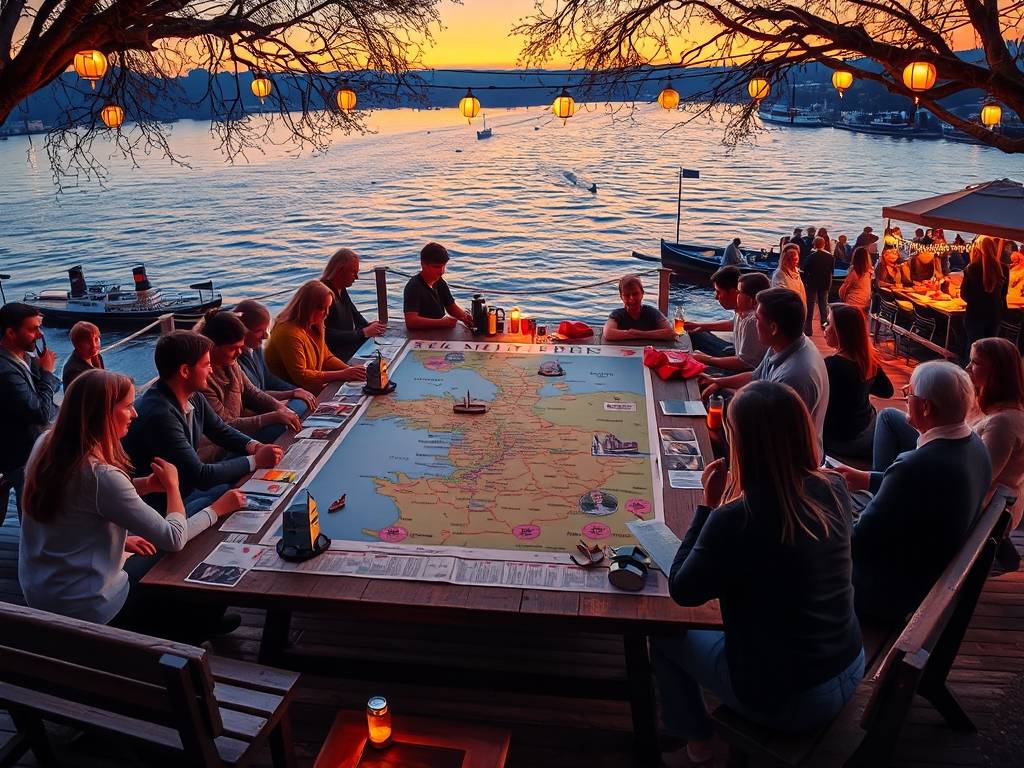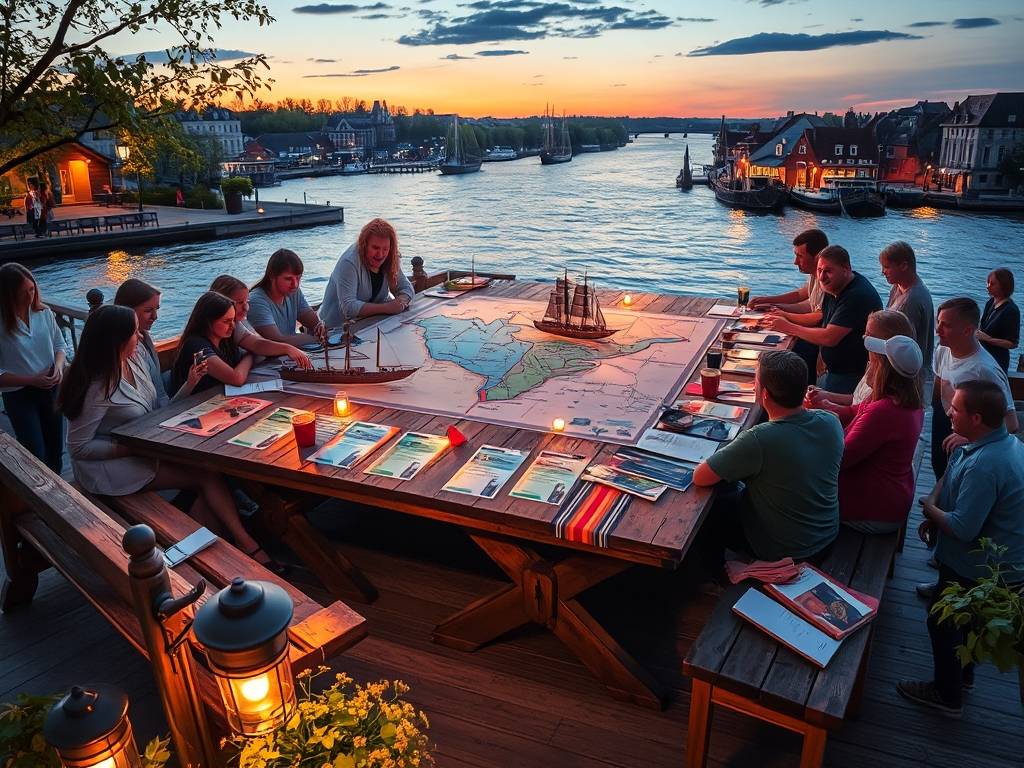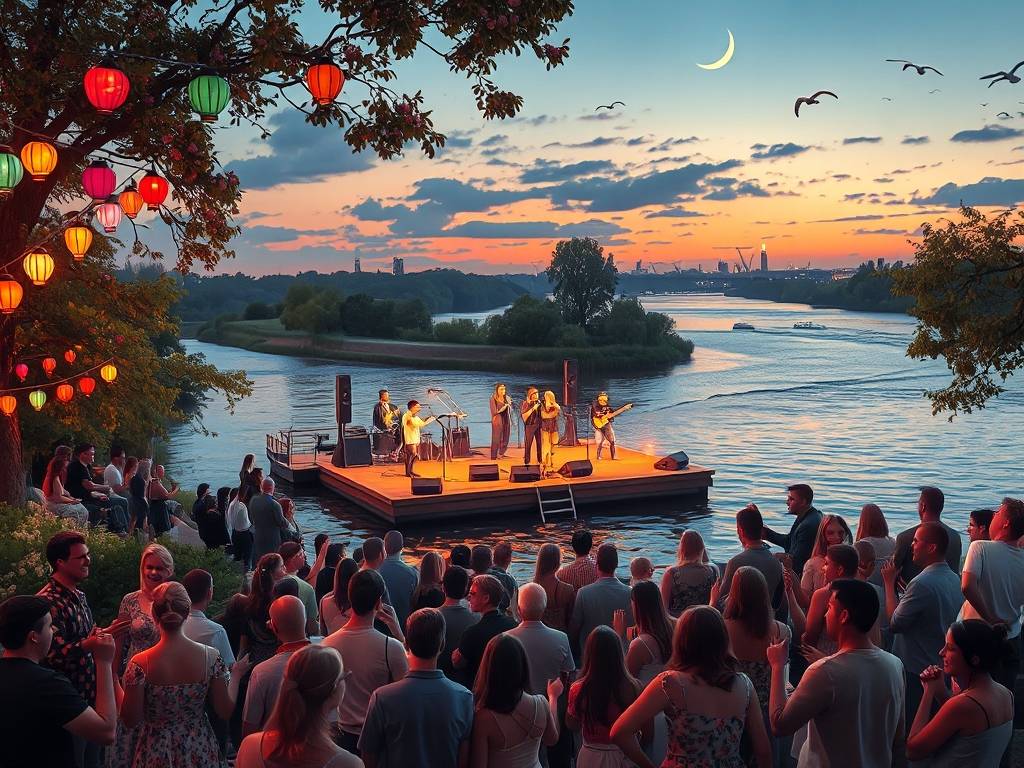Global Travel Information
Elbe River Trivia Nights: Test Your Knowledge of the Waterway
The Elbe's Enigmatic Currents: A Trivia Night Journey Through Its Lore and Landscapes
Gather 'round, history buffs, geography geeks, and lovers of a good challenge! Welcome to the ultimate Elbe River Trivia Night, where the currents of Central Europe's great waterway carry stories as fascinating as they are ancient. Forget your standard pub quizzes; tonight, we're navigating over 1,100 kilometers of history, culture, and natural wonder. So, grab a stein of a fine Saxon beer, settle in, and let's see if you can ride the tide of questions about this legendary river.
The Source and the Course: A Geographic Prelude

Our journey begins, as all great river journeys do, at the source. Can you name the mountain range where the Elbe's first droplets emerge? That's right, it's the Krkonoše Mountains, or the Giant Mountains, in the Czech Republic. Here, the river is known by its Czech name, the Labe. This isn't just a trivial name change; it signifies the river's role as a cultural bridge long before it becomes the mighty Elbe we know in Germany. A crucial piece of Elbe River history is its path. Flowing northwest, it carves through the Bohemian landscape before dramatically cutting through the Elbe Sandstone Mountains, creating one of Europe's most spectacular natural theatres: the Saxon Switzerland National Park. This leads us to our first long-tail keyword-style question: "What is the name of the iconic sandstone bridge in Saxon Switzerland that offers breathtaking views of the Elbe's canyon?" If you whispered "Bastei Bridge," you're already earning points. This natural fortress, perched high above the river, speaks volumes about the geographical significance of the Elbe River as both a barrier and a passageway.
A Liquid Timeline: Kings, Commerce, and Cathedrals
As our trivia raft floats into Germany, the questions dive deeper into the past. The Elbe has been a witness to millennia of human drama. A key Elbe River trivia point: Which Slavic tribe settled along its fertile banks, founding a fortress that would one day become the city of Dresden? The answer is the Sorbs, whose legacy is still cherished in the region. Then came the kings and emperors. The river was the lifeblood of the Kingdom of Saxony, and its banks are dotted with magnificent castles and palaces built to showcase power and control over this vital trade route. Schlosspillnitz, for instance, is a unique riverside palace that was a favorite summer residence for Saxon royalty. But perhaps no city on the Elbe is more synonymous with baroque splendor than Dresden. The question here isn't just "What is Dresden's famous church called?" (The Frauenkirche), but "How did the Elbe River contribute to its destruction and subsequent rebirth?" During the WWII bombing, the heat from the firestorm was so intense it caused the church to collapse. Decades later, after German reunification, the restoration used original stones salvaged from the riverbank, making the Elbe a literal part of its reconstruction—a poignant piece of Elbe River historical facts.
Speaking of commerce, let's talk about the Hanseatic League and Elbe River trade. Which powerful Hanseatic port, located at the point where the Elbe meets the North Sea, grew immensely wealthy controlling the flow of goods? Hamburg, of course! Its Speicherstadt warehouse district, built on thousands of timber piles in the Elbe's waters, is a UNESCO World Heritage site and a testament to the river's role as a commercial superhighway. For a tougher long-tail question, try this: "What specific commodity, transported along the Elbe from the Czech lands, was crucial for the brewing industries of cities like Hamburg?" The answer is hops, a golden cargo that fueled another of the region's great traditions.
Nature's Resilient Pulse: From Beavers to Vineyards
The Elbe isn't just about human history; it's a vibrant ecological corridor. After decades of industrial pollution, one of the great success stories of European conservation has been the Elbe River biosphere reserve. Stretching for over 400 kilometers, it's a sanctuary for rare species. A wonderful piece of Elbe River wildlife trivia: Which large, semi-aquatic rodent, once nearly extinct in the region, has been successfully reintroduced and is now a keystone species, its dams helping to reshape the river's floodplains? Give a round of applause for the European beaver! The river's meadows are also a critical stopover for migratory birds. So, for the birdwatchers, name a long-distance traveler that relies on the Elbe's wetlands. The graceful white stork or the evocative common crane are both correct answers.
And let's not forget the flora. The slopes of the Elbe Valley, particularly around Dresden, are famous for their Elbe River valley vineyards. This is Europe's northernmost wine-growing region for quality red wine. The unique microclimate created by the river allows grapes like the Goldriesling to thrive. A fun question for the oenophiles: "What is the name of the traditional flat-bottomed boat historically used to transport wine barrels on the Elbe?" It's the Weinböhme, a vessel as unique as the wine it carried.
Modern Currents and Curiosities
Our trivia night wouldn't be complete without venturing into the modern era. The Elbe has been a political boundary, a symbol of division, and eventually, reunification. A profound moment in 20th century Elbe River events occurred near Torgau in April 1945. What was it? This was the historic meeting between American and Soviet troops, the "Elbe Day," a handshake that foreshadowed the end of World War II in Europe. Decades later, the river marked the border between East and West Germany. The phrase "crossing the Elbe" held immense weight during the Cold War.
Today, the river is a hub for Elbe River cruise tourism and travel. But here's a tricky one: "What is the specific name of the low-water phenomenon that increasingly affects shipping and tourism on the river, and what ancient 'Hunger Stones' does it sometimes reveal?" The answer is hydrological drought, and these stones, etched with warnings from past centuries, are a chilling reminder of the river's vulnerability to climate change. They bear inscriptions like "Wenn du mich siehst, dann weine" ("If you see me, then weep").
Finally, for a truly local insight, test your knowledge of cultural landmarks along the Elbe. Beyond Dresden's skyline, what is the "Blue Wonder"? No, it's not a fish! It's the Loschwitz Bridge in Dresden, an engineering marvel from 1893 that was famously not destroyed in the war. And in Hamburg, what futuristic landmark, a concert hall built atop an old warehouse, juts out over the Elbe? The magnificent Elbphilharmonie, a symbol of the city's modern identity, rooted in its historic connection to the water.

As our trivia journey concludes, remember that the Elbe is more than just a line on a map. It's a living, flowing archive of European history, a sanctuary for wildlife, and a source of inspiration and livelihood. Whether you aced every question or simply learned something new, you've now dipped your paddle into the enigmatic currents of one of the continent's great waterways. Until next time, keep your curiosity flowing as steadily as the Elbe itself
相关文章
- Elbe River Tai Chi Classes: Relax & Exercise Outdoors
- Elbe River Dance Events: Outdoor Classes & Parties
- Elbe River Karaoke Nights: Sing by the River
- Elbe River Quiz: How Much Do You Know About the Elbe?
- Elbe River Facts for Kids: Educational Information
- Elbe River Coloring Pages: Fun for Children
- Elbe River Crafts: DIY Projects Inspired by the River
- Elbe River Stories for Kids: Bedtime Tales About the Waterway
- Elbe River Games: Fun Activities for Families
- Elbe River Puzzles: Jigsaws & Brain Teasers
发表评论
评论列表
- 这篇文章还没有收到评论,赶紧来抢沙发吧~


